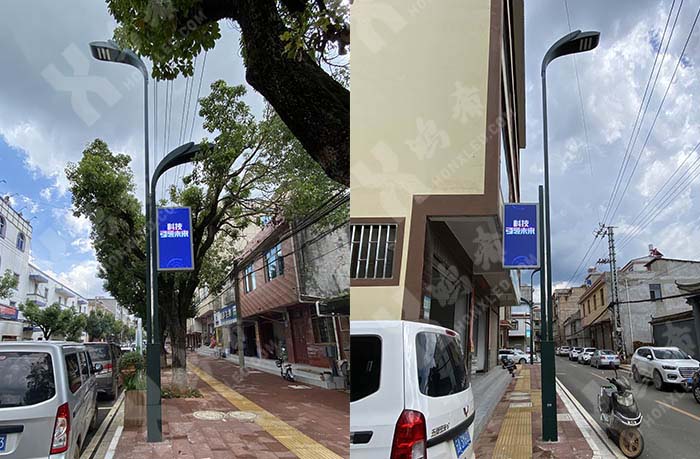As smart city infrastructure expands, LED light pole screens are becoming increasingly visible along roadways, in parks, near schools, and throughout urban communities. These screens must strike a delicate balance—offering high visibility during daylight while reducing brightness at night to avoid disturbing nearby residents or distracting drivers. This is where automatic brightness adjustment becomes a critical feature.
However, achieving this functionality involves more than simply adding a light sensor. Several key technical challenges must be addressed to ensure stable, responsive, and reliable brightness control in all lighting conditions. Below are four essential breakthroughs that make this possible.

The foundation of automatic brightness adjustment is accurate detection of ambient light. LED light pole screens typically operate within a brightness range of 600cd to 6000cd, requiring wide-range, sensitive photoresistors to respond smoothly to changing light conditions.
Standard sensors often fall short in performance, especially in outdoor environments with fluctuating light. Custom-built photoresistors—designed specifically for LED applications—are required to provide accurate, real-time readings. These high-sensitivity sensors ensure that brightness transitions are smooth and suitable for both bright daylight and nighttime environments.

Sensor data is only as useful as the system that processes it. To translate light level readings into precise brightness changes, advanced control boards and responsive software are essential.
Effective brightness adjustment systems support more than 100 finely-tuned levels of brightness. This granularity allows for subtle changes that match real-time lighting variations. The software must be highly responsive, accurately interpreting sensor data and controlling screen output without lag or abrupt shifts. Developing such systems requires strong expertise in embedded hardware and software integration.
LED light pole screens are installed in a range of urban settings—from open highways and busy intersections to shaded residential streets and tree-lined parks. Each location demands a tailored brightness response.
To meet this need, brightness control systems must adapt based on environmental factors. Screens in shaded or narrow areas may require less intensity, while those in open sunlight need more. Using data collected from past deployments, the software can be fine-tuned for different environments, ensuring consistent visibility while minimizing glare or disturbance.

Outdoor exposure introduces risks that go beyond sensor accuracy. Rain, dust, sunlight, and air pollutants can all degrade components over time—especially the light sensors.
To ensure long-term reliability, these components must be protected. Waterproof designs using sealed glass covers and rubber rings keep moisture out, while UV-resistant coatings prevent sun damage. Corrosion-resistant materials are also essential for wiring and sensor housing. These protective measures are key to maintaining stable performance in varying weather conditions.

Simply adding a light sensor isn’t enough. Truly effective automatic brightness control requires attention to system design, component quality, environmental adaptability, and durability. Many vendors may offer low-cost solutions that cut corners, but these often lead to inconsistent performance and increased maintenance.
As LED light pole screen applications continue to grow, real-world experience has revealed the importance of comprehensive solutions. Professional manufacturers invest in long-term development and refinement, ensuring their products meet the complex demands of outdoor urban environments.

Automatic brightness adjustment is no longer a luxury—it’s a necessity for LED light pole screens in modern smart cities. Reliable performance depends on achieving four key goals: accurate light sensing, advanced control systems, environmental adaptation, and robust outdoor protection.
Leading providers, like Tailong Zhixian, are pushing the boundaries of technology to ensure these requirements are met. By focusing on innovation and long-term reliability, they’re helping cities deploy LED screens that enhance public communication while protecting residents’ comfort and safety.

